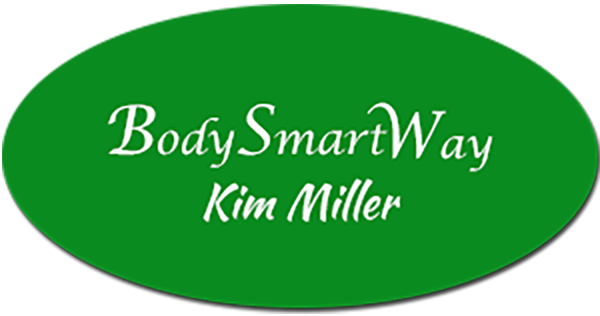by Kim Miller | Oct 27, 2016 | Uncategorized
Strengthening our muscles requires more than just varying our exercise routines. Maintaining and increasing our strength requires that our muscles recover from a tough workout. Recovery from a tough workout is all about getting the right combination of rest and movement to circulate blood, yet not so much activity that we are implementing a new challenge to the body. Below are three interesting ways to let your body rest so you may become stronger.
1. Hot-Cold Therapy

Hot-cold contrast therapy is a method for rapidly flushing blood through the body. This is because immersion in cold water removes blood quickly from the limbs (and carries waste products from training away along with it) and immersion in warm water brings new blood back in. This accelerates the circulation of blood through the body. The problem is that most people have neither the means to access hot/cold baths nor the desire to do these types of regimens. Fortunately, there is a way to get the benefit of hot-cold contrast treatments for specific parts of the body. You’ll just need a good old-fashioned hot water bottle and wet washcloths.
- Put the washcloths in the freezer until they are frozen. Hang them on the door of your freezer so it freezes flat or place open flat on the racks.
- Once the cloths are frozen, put hot water in the hot water bottle
- Place the frozen cloth on or around your desired area of treatment for five to eight minutes
- Put the used frozen cloth back in the freezer and put the hot water bottle on your body part for five to eight minutes.
- Place the second frozen cloth on or around your desired area of treatment for five to eight minutes.
- Repeat step 4 and keep switching the cloths back and forth for several cyles.
3. Sleep – No Guilt

During sleep our body releases hormones designed to enhance our ability to recover from work. People vary in how much sleep they need, but research suggest that most of us require 7-8 hours of sleep. When I am in training for more vigorous tennis play and have a particularly hard day/week of training I love to sleep 9-10 hours! I know it’s not too cool to admit I enjoy sleeping this much, but it’s how my body recovers best.
For those who can’t seem to get to bed early enough to get the required amount of sleep, know that contrary to popular belief, you do not need to get all of your sleep in dose. What seems to matter as much for health and recovery as the total amount of sleep is the number hours of continuous wakefulness. Meaning, if you’re up for a high number of hours continuously, your body will be less than pleased. I love this as naps are my favorite pastime on the weekends after long hours on the tennis courts. Tip: Have no guilt for sleeping and utilize nap time as a way to get in your required sleep amount that is perfect for you.
3. Move and Have Fun/Enjoy

Movement brings blood flow for healing. But do not think of movement in the traditional sense such as, in a gym; And do not think of healing as in the case of injury. Rather, think of “fun recovery” from a good workout as healing the body and soul so that you may recover and get even stronger! Fun movement that you enjoy doing and that is not too physically demanding actually helps healing while immobility usually prolongs recovery and delays healing. Think fun. Think enjoyment. For me that means being outside riding bikes, walking with my husband, walking with the pups, or tossing a frisbee on the beach! And what about you? I would love to know!
by Kim Miller | Sep 15, 2016 | Uncategorized

Who Get’s Hip Pain?
Hip pain is a common problem for both ultra active people and sedentary people. It is the extremes of living at both ends of the activity spectrum that gets us into trouble with hip pain.
Chronic pain is a sign that there is irritation or injury at a site. There are a multitude of conditions that can cause hip pain, from trochanteric bursitis to osteoarthritis. The great news is that movement is the solution for many of these conditions.
When I have personal training clients with hip pain I often see that they are overly active/run/ walk/bike 40 miles a week or more, or are living a sedentary lifestyle sitting for many hours at a time. It’s hard not to be sedentary a lot of the time in today’s world. As I sit here and type this newsletter, I am sedentary. My hips are folded and collapsed as I slightly round my lower back and hunch my shoulders forward to type. If I were to stay in this position like many office workers do for extended periods of time, I could expect hip pain, and back pain to eventually creep into my daily life.
I once had hip pain so excruciating that I had given up all activity except light stretching for several weeks and then finally more movement based training as the inflammation subsided.
Though chronic hip pain is frequently improved through movement training, other causes of hip pain can be caused by serious injury. Make sure you see a doctor first if the pain is substantial.
Three Common Causes of Hip Pain
1) Chronic Sitting
The average American sits 13 hours a day. This staggering amount of inactivity causes an imbalance of the hip musculature. The hip flexors remain in a shortened position, while the glutes and deep hip rotators remain elongated. Add to that chronic dehydration and the result is tissue that more closely resembles beef jerky than healthy muscle tissue.
This tissue lacks the necessary flexibility and elasticity to allow for smooth and efficient movement. It tears more easily and becomes overstressed more easily, and the rigidity of the tissue leads to more rubbing against bone and bursae.
2) Strength Imbalance
A strength imbalance is not the same as tightness or in-elasticity. A strength imbalance occurs most often when one’s exercise regimen is consistent and unvaried. Runners are an excellent example of this type of athlete. Whether running 12 miles a week or 45 miles per week, runners often feel like they don’t need more or different exercise. The repetition of the same movement without variation builds strength in some muscles, while neglecting others. This imbalance puts an unnatural amount of strain on those muscles, resulting in overuse injury.
3) Skeletal Imbalance
Skeletal imbalance refers to the uneven stature or movement pattern that many people demonstrate, which can be caused by so many things, including old injuries and leg-length discrepancies. When movements are not even or balanced bilaterally, one side will be the victim of added pressure, tissue friction or workload. These clients often fall victim to conditions such as bursitis or piriformis syndrome.
Fortunately, the fix for many of these hip issues can be found in the right movements.
Fix: Mobility
The best fix for immobility is mobility. Focus on improving range of motion of the hip flexors and hip rotators with gentle dynamic movement. For example, bodyweight squat and lunges.
| You |
Bodyweight Squat Variation |
Bodyweight Lunge Variation |
Bodyweight Deep Hip Opener |
| Healthy and strong |
Wide, deep squat |
Walking lunges |
Walking lunge with contralateral Rotation |
| Healthy intermediate |
Wide squat |
Walking lunges or split-stance squat |
Suspension trainer deep squats |
| New or older exerciser |
Suspension trainer and/or box squat |
Modified split-stance squat |
Body-weight deadlift |
| Injured exerciser |
Pain-free: suspension trainer and/or box squat |
Pain-free:
split-stance squat |
Pain-free:
Body-weight deadlift |
Fix: Elasticity
l
In my personal training business I aim to improve the elasticity of that beef jerky-like tissue by giving my clients stretching homework as well as weight loaded exercises to do daily between sedentary periods of time. Two to three hours of movement each week is not enough to undo 100+ hours of inactivity each week. My homework assignment for clients often looks like this:
| Daily |
Static stretch shortened muscle tissue for more than 60 seconds at least once daily. |
| Hourly |
Stand up and perform 10 bodyweight squats or chair sits every hour to get the muscles working and moving. |
| Nutrition |
Drink water all day. If you are well-hydrated, the hourly movement will pull water into the muscles, turning the jerky back into elastic tissue. |
Fix: Strength
I like to tell my clients not to underestimate the importance of pure strength. Improving the overall strength of various types of lifts and squats can be a great contributor to regaining skeletal balance and achieving strength balance. Getting back to basics is often the best medicine. I believe that strong is good. And I also believe that contrary to some movement professionals that machine weights vs free weight/ body weight exercises can be tremendously helpful in conditioning the muscles to move in various planes safely while increasing the strength of the muscles and joints.
With any injury, use pain as your guide. If a movement hurts, don’t continue. And realize that sometimes small aches and pains do subside as you continue in a movement. If you are ever unsure, just give me a call, email or text and I’d be happy to help you make sense of it.
All My Best,
Kim
by Kim Miller | Sep 7, 2016 | Uncategorized
Inexplicable Weight Gain
The other day I was out talking to a friend in the neighborhood. She told me she had recently gained a few pounds in her mid-section and doesn’t understand why. She did say she had not been sleeping much and that she is worried about a few things with her husband’s health. When I heard this, I understood immediately why she gained a few pounds.
Experts in the field of weight loss agree there are two main reasons that we may gain weight in the mid-section:
Stress hormones
The stress hormones cortisol and adrenalin actually prompt the body to store fat around the middle (even in skinny people). Compounding the effects of cortisol being released in the body due to constant stress, is the fact that cortisol breaks down muscle mass. This explains why we may see people who have a normal weight and in fact may even appear underweight because their arms and legs are thin due to decreased muscle mass, while their abdominal regions can be quite large.
Inflammatory cytokines
When we are stressed we are often sleep deprived. Stress hormones caused by sleep deprivation can prompt the release of inflammation. Many experts now agree that it is inflammation in our bodies that causes havoc to our systems increasing the possibility of disease. For more information on this take a look at this post on ‘How Stress Wreaks Havoc on Your Gut’
Three Things To Do Today if You Have Gained Weight In the Middle:
- Sleep.
- Eat an abundance of vegetables to crowd out your desire for sugar and carbohydrates.
- Take a walk.
Keep It Simple. Be Mindful. Monitor Your Progress.
Mindfulness means being in the present, being aware of what is happening and what you are doing, observing what is going on, participating fully in what is going on around you. By learning to live in the present, you can have a life that is more in tune with your activities and in what you want to accomplish.
So what does this all mean with regards to losing a few pounds?
Everything. If you approach this challenge following the above three suggestions: sleep, eat vegetables, and walk with what is called a reasonable mind then you will tackle the 3 tasks with more of a planning behavior. This means you would approach doing these tasks with an eye towards solving a problem intellectually. The problem is belly fat and how to lose it. The tasks are the method you use to solve the issue.
How to Achieve Long Lasting Success
If you simply follow the plan and monitor the outcome, you probably will have great results – yes. The thing is, most people stop at this point, trying to make weight loss a strictly intellectual rational mind process – you know that kind of thinking that says, “do this, do not do that?” Long term healthy living and weight loss does not work this way.
That’s why so many healthy living diets fail. If you really want to do this simple plan right, then you must give it up emotionally as well. I know none of us want to believe that emotion should be tied into weight loss, but it must. Forget that emotion is for the weak and consider that the most successful people, when it comes to maintaining weight loss, have both the emotional component of weight loss covered ( ‘I messed up-now get back at it’), along with the intellectual ‘do this don’t do that’ component.
The most successful clients I’ve coached have these two aspects in sync: The Reasonable Mind and the Emotional Mind.
In The World of Psychology They Call it Wise Mind
Wise Mind is the coming together, the overlap of Reasonable Mind and Emotion Mind. But when they come together or overlap, they produce something bigger than either of them were separately. What is added is intuition, a feeling of “knowing” what’s right, a felt sense, a sense that some people feel in their body (head, heart, stomach or somewhere else) that something is just right, the right thing to do or the right way for things to be. You can experience intuition about what’s right or appropriate without thinking about it, without knowing it intellectually, just feeling it.
Some of you will experience Wise Mind after a crisis. It is like the calm after the storm.
Sometimes you may “feel” the right choice in some dilemma, when the feeling comes from deep inside you.
Regardless of how you arrive at this wisdom in healthy living it is important that you take steps to help you arrive there.
My Challenge to You
Take the 3 steps mentioned above: sleep, increase vegetables, walk daily, and see if you can integrate your Reasoning Mind with your Emotional Mind arriving at your Wisdom Mind in healthy living. Think of this as practice, getting you one step closer to a healthier lifestyle that will stick.
And, if you get a chance let me know how it is going.
by Kim Miller | Aug 24, 2016 | Uncategorized

So often we are focused on feeling good through exercise that we forget to take the time to monitor how we really feel. Most everyone agrees that exercise makes us feel better about our bodies and our lives in general. All too often though we get wrapped up in the psychological feel good endorphin rushes that we forget to monitor those little aches and pains that are often precursors to impending injury. Below are a few pointers I hope will guide you along if injury gets in your way.
Use Correct Form

Proper exercise form is always important, but is critical when coming back from an injury. At the very least, review the correct form for any exercise that involves the previously injured spot.
Regardless of the exercise, these cues will help you maintain good form:
1. Keep your spine straight and extended with a high chest. This ensures good posture without overcorrecting.
2. Relax your shoulders. Stress and computer time make shoulders and chest muscles tight. Keep a high chest and let your shoulders feel down and back.
3. Move from your hips. During full-body and lower-body exercises, movement initiates from your hips. Keep your spine long and move from the hips to avoid lower-back involvement.
Right Exercises Are Key

Take your exercises down a notch, even though you may not want to. Trust it is exactly what you need to do when returning to workouts post-injury. Either choose an exercise that is less challenging than the exercises you did pre-injury or choose to limit the weight and range of motion of the exercises.
For instance, when coming back from a knee injury, decrease the weight of your squats and then only squat down as far as you can while remaining pain-free. When first coming back, you may even want to remove the weights altogether and limit yourself to bodyweight exercises.
Then, every time you do squats, test your range of motion to see if you can get a little lower without pain. Over time, you’ll be able to reach full range of motion. You can then safely increase the amount of weight you are lifting.
My Friend’s name is Pain

Pain is your body’s way of letting you know that something is wrong. Stay away from painkillers before your workout so you can listen to your body. If your injury site hurts while you are working out, you may be doing more harm than good. But also note that there is a fine line and sometimes pain subsides as you do a few more reps. Be smart and keep the weight minimal as you make note of your increased, same, or increased pain the next day. Notice pain during an exercise? Try any or all of these tips:
1. Limit your range of motion to stay in a pain-free range.
2. Switch to a different, pain-free exercise.
3. Decrease the amount of weight you are using.
This can be the tricky part of getting back to workouts. If you have a limited knowledge of exercise modification or variety, you may have a hard time finding a pain-free exercise that also strengthens the previously injured area. If that happens, give me a call and I will be happy to get you through your injury in a smart progressive manner.
Be Active During Recovery

Active recovery post-workout can mean several things depending on your goals. Post-injury, I recommend the following:
- Weekly massage, or use a foam roller for deep-tissue massage to the muscles around the injury.
- Ice! Ice is the miracle “drug” and a post-workout ice pack for 20 minutes or a swim in a cold pool are great ways to get the benefits of the cold.
- Stay hydrated and eat well. Make sure you are drinking enough water every day and getting the nutrients you need for your exercise level.
- Stretch. End your workouts with a foam roller and stretch routine for the muscles surrounding your injury. Focus on deep, long stretches. Hold the stretch for at least 60 seconds. Restorative yoga with a qualified instructor can be a huge benefit to people who are recovering from injury and understand the need for active recovery.
All My Best,
Kim
by Kim Miller | Jun 16, 2016 | Getting Back into Shape/Health, Uncategorized

How it Starts
Do you believe that walking doesn’t work for you? Do you think that walking doesn’t count as exercise? Think about this.
Myth: Walking Doesn’t Work For Me
Truth: Walking has been proven to be an effective way of managing a healthy weight, achieving performance goals, releasing stress, and improving overall health.
There are a variety of reasons why someone might feel like walking doesn’t work. Novice exercisers often become frustrated if they don’t immediately achieve results; many fitness programs promote false-hope promises like losing 10 pounds in 30 days simply from walking. And sometimes people enter into a walking routine with great intentions but start too hard, too quickly, and burn out and or get injured.
In my practice of health coaching and healthy living, I like to meet people where they are at. Often where they are at is searching for an activity that they enjoy. Walking is a go to for many people who want to just feel healthy. I encourage walking but recommend the following tips.
5 Tips
1. Do not expect to lose 10 pounds in 30 days by increasing your walking/exercise. On the other hand most people who are even moderately overweight can expect to lose 10 pounds in 30 days if they change what they eat. If feeling healthy is your main focus, get out there and move, but if weight loss is your main focus, change what you eat, and exercise yes, but do not think you will exercise your body to a lean body weight without also changing your other habits.
2. Increase your walking time and or distance incrementally. A consequence of not being smart about exercising progressively is that the body tends to break down when it is ill prepared. Though you can ” walk all day and it feels easy” it may not actually be easy on your body. So many people are injured prematurely because “it feels easy and my body should be able to do this” mentality. Don’t let this be you. Incorporate long and short walk days mixed in with thoughtful mileage or time goals for each week as you progress.
3. Stretch all the key muscle groups after long walks. Walking on flat surfaces increases endurance in the muscles especially in the back of the body: calves, hamstrings, and lower back, and hip flexor muscles. You should stretch these muscle groups once a day and right after you walk preferably. If you are climbing hills, then the quadriceps/ front of the upper thighs, as well as the gluteal muscles are also engaged. They should be stretched as well.
4. You should size yourself up with a good running/walking shoe. Research is changing and the old days of sizing up your feet for shoes based on whether you are a pronator striker ( feet and ankles tend to rotate inward on impact), supinator striker ( feet tend to bend outward on impact), or neutral striker ( feet tend to strike evenly) are gone. Best advice: choose a comfortable shoe that feels great. Walk around in the store with the shoes on and make sure it fits and feels great. Don´t buy something you feel you need to ´break in´.
5. Go into your walking routine with a lifestyle change mindset. Often in the beginning of forming new habits it takes a while to get into the flow of simplicity and healthy living, but as you continue on with your new challenge things start changing inside of you. We can’t force this change inside of us, we just have to, as one client says, trust that you’re going to feel better and begin to look forward to getting out and walking and or exercising. I love this thinking. We can’t force things. We just have to trust that all is going to be fine and that soon walking/walk running/ running or whatever it is you are working on is going to soon feel fine.
by Kim Miller | Jun 8, 2016 | Uncategorized

The other day John and I had to unexpectedly make a trip to Ohio to assist my mother. Our long distance driving trip came at a time when we were both feeling grooved in our daily exercise habits, eating habits, and work-life balance habits.
I mention this because often in my health coaching practice, client’s main goals are often to liberate themselves from the stresses of their day to day lives by increasing their good health habits and eradicating poor health habits.
But what do we do when emergencies arise? Being as they say, “on the wagon”, or as I like to call it, “grooved” is a great feeling no doubt, but then… real life happens
A two-week vacation! A business trip. A visit to the see the kids, or a surprise emergency situation.
And we fall “off’ the wagon.”
Vacation time or visiting family used to get me out of my groove. These days, I am a pro at it. And My husband John is kinda good at it.
Here’s What We Do:
Instead of stressing out about how to continue our good routines during this period of disruption with hotels, eating out, sitting in cars/airplanes, and not getting home until after 10pm, we just take another wagon. We tell ourselves ( sometimes I just tell him) we’ll be taking another wagon for a while. It won’t be the same wagon as when we are grooved in our lifestyle at home getting up at 5 a.m., stretching, walking the dogs, reading meditations, and enjoying breakfast before the day’s work begins, but it will be a better wagon than simply resigning ourselves to poor health habits because we are too stressed about where we will work out and run or walk.
A Better Wagon For You
Could it be possible to find different ways of staying healthy while in different scenarios? When I’m in control of my schedule/food sources/exercise equipment/comfortable bed, I will have one routine. Then, when on the road I will have another routine. And on vacation, I will find another routine.
Even on weekends! I will have a weekend routine!
I will never be ‘off’ my wagon.
Each routine will incorporate as much goodness as possible. Sometimes more goodness than others, but at no point will I just throw in the towel.
I will always stay ‘on’ a wagon.
Here is an Example of My home wagon and my travel wagon (previously known as ‘off’ the wagon). See If it helps:
Home Wagon:
Morning
– 16 oz water with lemon zest. 6 oz. coconut water. Coffee. 20 minute stretch routine.
– inspirational readings 5 minutes. Dog walk with dogs and husband.
– morning shake and supplement routine including multi -vitamin, fish oil, vitamin D, b complex vitamins.
Afternoon Exercise:
– cardio exercise run/walk, singles tennis, elliptical, bike, steps, or rowing.
– strength training workout at Serenata Beach Club or World Gym.
During the Day:
– well balanced meals including good fats, abundance of vegetables and low sugar fruits, proteins, nuts, seeds, and some beans and whole grains depending on weight goals.
Bedtime Routine:
Walk the dogs with John.
Watch 30 minutes of Ted Talks/or Netflix Series.
Read 10 minute in bed.
Lights out.
Work/Family Travel Wagon:
Morning
– 16 oz water. 20 minute stretch and strength routine in hotel room including pushups, squats, and abdominal curls.
– 2 minutes meditation mantra – mantra changes with situation. For example recently: ” I can do whatever it is I set my mind to do.”
– multi vitamin supplement only if traveling for under 5 days. Starbucks high protein snack pack and coffee for breakfast
Afternoon Exercise:
– Find ways to include more walking while at airport, between car stops and while visiting family friends/or during conferences
During the Day:
– Make best possible choices while at restaurants/family/friend homes being sure to always eat lots of vegetables, good fats when possible and lean proteins.
Bedtime Routine:
10 oz water. 15 minutes easy television watching.
Lights out.
Here’s the Thing
Don’t beat yourself up. Don’t stress out about real life interference. Don’t feel guilty about enjoying your vacation. And don’t sabotage your weekly progress on weekends. Just identify your wagon and create an easy plan for each one.
You need never be ‘off’ your wagon again. Just hop on a different wagon, and make the most of the ride.
30 Days To Lean Good Stuff!
Congratulations to Brandon and Robin who lost a total of 57 pounds together in 60 days on BodySmartWay’s 30 and 60 Days to Lean Program
And guess what? They just got married!
Good stuff Robin and Brandon! Congratulations!All My Best,
Kim












